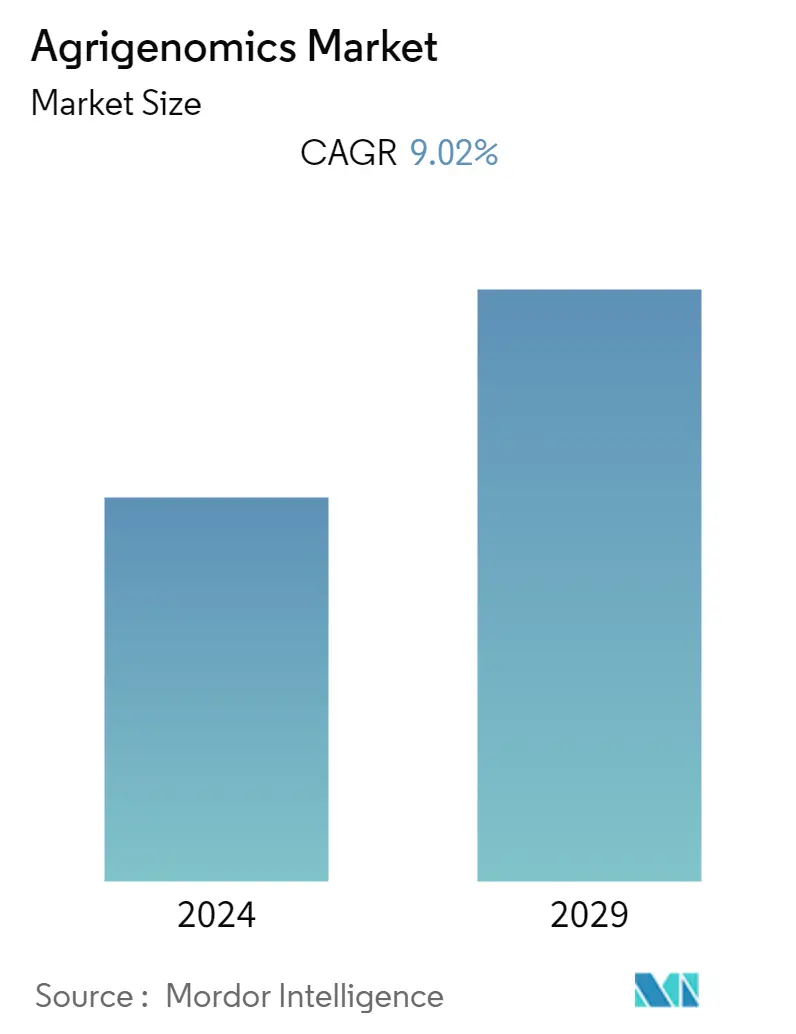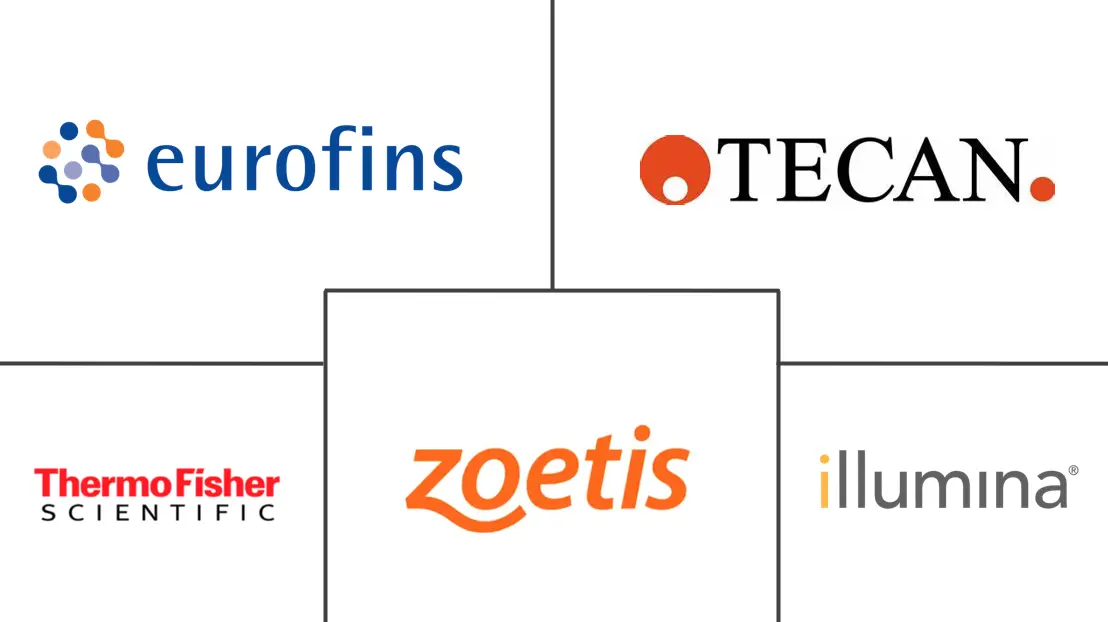Market Size of Agrigenomics Industry

| Study Period | 2019 - 2029 |
| Base Year For Estimation | 2023 |
| CAGR | 9.02 % |
| Fastest Growing Market | Asia Pacific |
| Largest Market | North America |
| Market Concentration | Medium |
Major Players
*Disclaimer: Major Players sorted in no particular order |
Need a report that reflects how COVID-19 has impacted this market and its growth?
Agrigenomics Market Analysis
The Agrigenomics Market size is expected to grow from USD 3.96 billion in 2023 to USD 6.10 billion by 2028, at a CAGR of 9.02% during the forecast period (2023-2028).
- Agrigenomics is the study of plants' genetic makeup and how the genes contribute to crop production. Microarray and next-generation sequencing (NGS) technologies are helping breeders and researchers evaluate and predict genetic merit in plants and animals, informing crucial decisions about selection and health. The research aims to completely understand yield optimization, plant evolution, disease resistance, phylogenetic relationships, pest control, stress tolerance, and food and biofuel optimization.
- The rising applications of agrigenomics in routine agriculture activities, the increasing number of deoxyribonucleic acid/ribonucleic acid (DNA/RNA) sequencing project grants, and technological developments in genomics and agriculture are some of the key drivers expected to drive market growth during the forecast period. The other factors supporting the growth of the global agrigenomics market are the increasing food consumption volume due to the increasing population, the growing use of advanced tools and techniques of genome research testing, and rising investments in research & development activities by government-funded organizations.
- Illumina technology has become increasingly popular in agriculture for developing high-yielding genomics in livestock and crops. This technology enables researchers and breeders to identify genetic variations responsible for desirable traits, such as disease resistance, increased productivity, and improved quality. By sequencing the genomes of various organisms and analyzing the data using Illumina technology, researchers can identify specific genes and genetic markers associated with these traits, which can then be used to develop new and improved strains of crops and livestock. Microarray and next-generation sequencing (NGS) technologies are useful for studying various aspects of plant and animal genomics, including genotype, gene expression and regulation, and epigenetics. These approaches offer the throughput, sensitivity, and precision needed to evaluate genetic markers and discover new ones associated with traits or diseases.
- The increase in applications of genome sequencing in livestock not only enables the study of parent lineage but also aids in understanding the characteristics of infectious agents, such as bacteria and viruses that infest them or live on them. The resolution of the next-generation sequencing enables researchers to study the mutations in infectious agents over time, and help in understanding the transmission patterns of these diseases, thereby contributing to the development of effective treatment.
